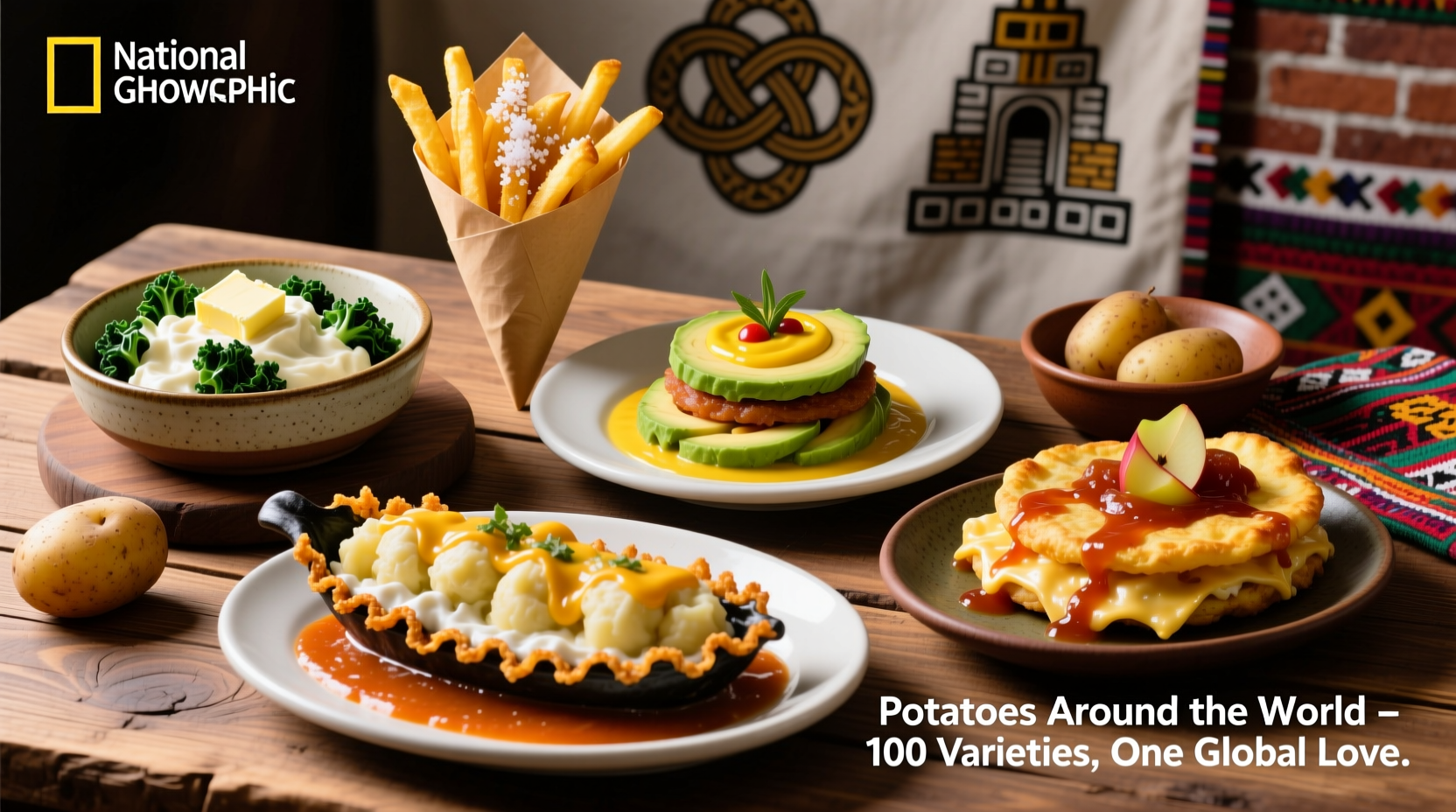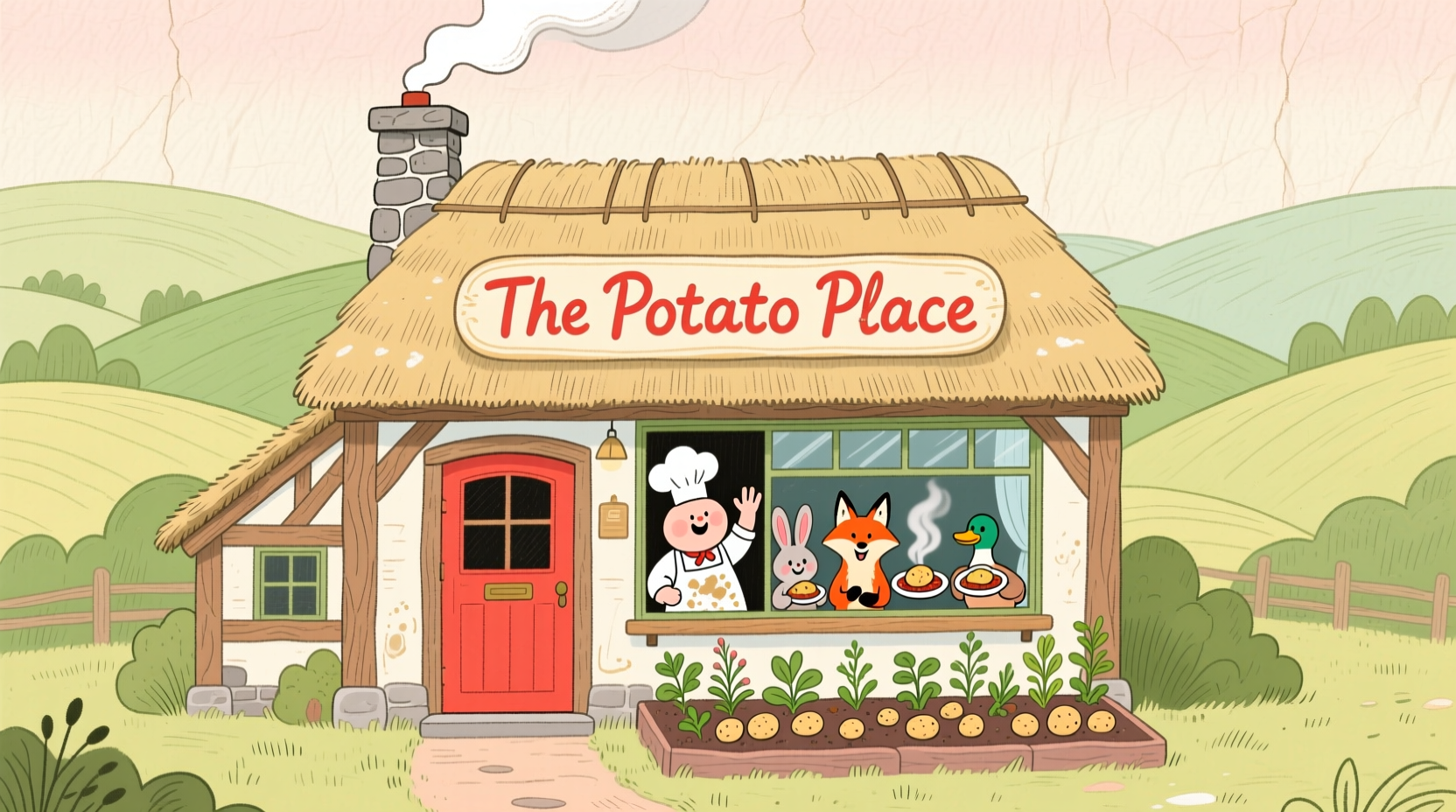"The Potato Place" typically refers to restaurants or culinary establishments specializing in potato-based dishes, with origins tracing back to the Andean region where potatoes were first cultivated over 8,000 years ago. These venues celebrate the versatility of potatoes through global preparations ranging from traditional Peruvian causa to modern gourmet creations.
What Makes a True Potato Destination Stand Out
When searching for "the potato place," you're likely seeking more than just french fries. Authentic potato-focused establishments distinguish themselves through specialized knowledge and creative applications of this versatile tuber. Unlike generic restaurants that might offer a token potato side dish, dedicated potato venues showcase the ingredient's remarkable diversity across cultures and cooking techniques.
According to the International Potato Center (CIP), there are over 5,000 varieties of potatoes worldwide, each with unique characteristics suited to different preparations. The best potato establishments understand these nuances, selecting specific varieties for particular dishes to maximize flavor and texture. For example, the russet potato's high starch content makes it ideal for fluffy baked potatoes, while waxy varieties like fingerlings hold their shape beautifully in salads.
| Common Potato Varieties | Best Cooking Methods | Flavor Profile |
|---|---|---|
| Russet | Baking, mashing, frying | Earthy, fluffy when cooked |
| Yukon Gold | Mashing, roasting, boiling | Buttery, rich |
| Fingerling | Roasting, grilling, salads | Nutty, firm texture |
| Red Bliss | Boiling, salads, roasting | Sweet, waxy |
The Historical Journey of Potato Cuisine
Potatoes weren't always the global staple they are today. Their journey from the Andes to worldwide acceptance makes for a fascinating culinary timeline:
- 8000 BCE: First domestication in the Andes region of South America
- 1530s: Spanish conquistadors bring potatoes to Europe
- 1700s: Potatoes become staple food across Europe despite initial resistance
- 1845-1852: Irish Potato Famine demonstrates global dependence on the crop
- 20th Century: Global spread of potato dishes through migration and cultural exchange
- Present Day: Over 1.3 billion people worldwide consume potatoes regularly (FAO data)
This historical context explains why "the potato place" concept resonates across cultures. Each region developed unique potato preparations based on local conditions and available varieties. In Peru, you'll find causa (a layered potato dish with fillings), while Ireland perfected the boxty, and Germany created kartoffelpuffer (potato pancakes).

How to Evaluate Quality at Potato-Focused Establishments
Not all venues calling themselves "the potato place" deliver exceptional experiences. Here's what discerning potato enthusiasts should look for:
Ingredient Sourcing and Preparation
Top establishments prioritize fresh, locally sourced potatoes when possible and demonstrate knowledge about different varieties. They'll often specify which potato type they use for each dish and why. According to agricultural research from Cornell University, proper storage conditions (cool, dark, and humid environments) significantly impact potato quality and cooking performance.
Culinary Innovation Within Tradition
The best potato venues balance tradition with innovation. They honor classic preparations while offering creative interpretations. Look for menus that explain the cultural origins of dishes while presenting them with contemporary flair. A genuine "potato place" won't just serve mashed potatoes with gravy—they'll offer variations like Peruvian causa rellena or Spanish tortilla with seasonal ingredients.
Contextual Appropriateness
Understanding where certain potato preparations shine is crucial. Some contexts where specific potato dishes excel:
- Casual dining: Loaded potato skins, poutine, and hash browns work well for relaxed settings
- Formal occasions: Potato gnocchi, pommes dauphinoise, or truffle-infused mashed potatoes suit upscale menus
- Cultural celebrations: Traditional dishes like Irish colcannon for St. Patrick's Day or German kartoffelsalat for Oktoberfest
- Health-conscious options: Steamed fingerling salads, roasted sweet potato bowls, or baked potato bars with nutritious toppings
Must-Try Potato Dishes from Around the World
When exploring "the potato place" concept globally, these preparations represent the pinnacle of potato cuisine:
South American Classics
As the birthplace of the potato, South America offers the most diverse preparations. Peruvian cuisine features causa (a layered dish of mashed yellow potatoes with avocado, chicken, or seafood), while Ecuadorian llapingachos (potato cheese patties) showcase indigenous influences.
European Traditions
From Ireland's boxty to Germany's kartoffelsalat, European potato dishes reflect centuries of culinary adaptation. French pommes dauphinoise represents the height of refined potato preparation, while British bubble and squeak transforms leftovers into a beloved classic.
Modern Innovations
Contemporary chefs continue pushing potato boundaries with techniques like:
- Potato ash-infused dishes
- Deconstructed potato preparations
- Fermented potato creations
- Potato-based cocktails and desserts
Finding Your Perfect Potato Experience
Your ideal "potato place" depends on your specific preferences and needs. Consider these factors when searching:
Dietary Requirements
Many potato establishments now accommodate various dietary needs. Look for venues that specify gluten-free, vegan, or low-sodium options. Potatoes themselves are naturally gluten-free and can be prepared to suit most dietary restrictions with thoughtful modifications.
Seasonal Considerations
Potato quality varies by season. In North America, new potatoes appear in late spring and early summer, while storage varieties reach peak quality in winter months. The best establishments adjust their menus seasonally to showcase potatoes at their prime.
Value Assessment
When evaluating "the potato place" options, consider:
- Ingredient quality versus price point
- Preparation complexity and skill demonstrated
- Portion sizes relative to cost
- Additional value (atmosphere, service, knowledge)
Remember that exceptional potato preparation requires skill—transforming a humble tuber into memorable cuisine isn't as simple as it might appear. The most authentic venues treat potatoes with the respect they deserve as a culinary cornerstone.











 浙公网安备
33010002000092号
浙公网安备
33010002000092号 浙B2-20120091-4
浙B2-20120091-4